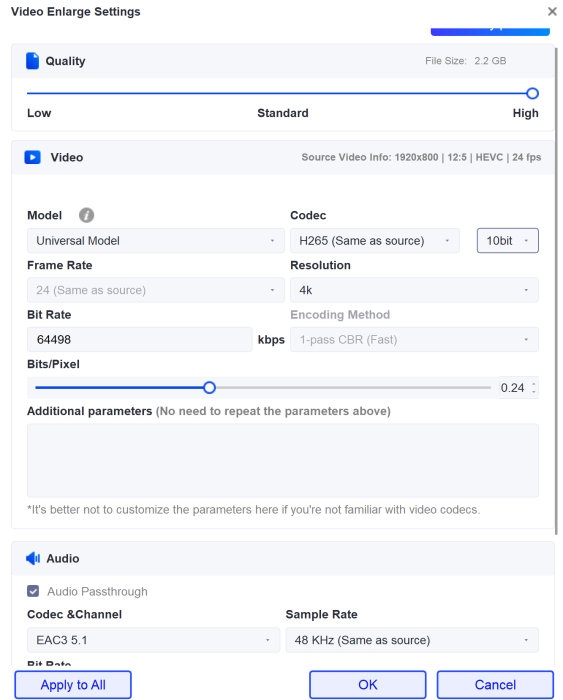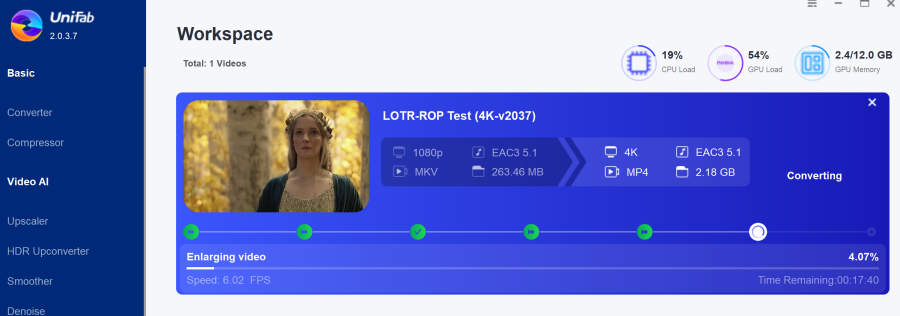I investigated, tested, and reviewed this further, especially given that I could not recollect the exact 2.0.3.x version I used (nor the exact settings).
The original source video I used for this test has a resolution of 1920 x 800, or an aspect ratio of 2:40. When I select to upscale to 4K in version 3.0.0.1 (and 3.0.0.0) it doubles the resolution to 3840 x 1600 in order to maintain the original 2:40 aspect ratio with a bit rate of 28339kbps.

I installed UniFab 2.0.3.7 and for the same video source file I enlarged the video to 4K using the following settings:


Version 2.0.3.7, contrary to 3.0.0.1, with the settings noted produces an output file with a 5184 x 2160 resolution (still maintaining a 2:40 aspect ratio) and with a resulting bit rate of 64745kbps. This would help explain the superior video quality with greater detail above the output produced using version 3.0.0.1.
To conclude, it appears that both are maintaining a 4K minimum resolution and the original 2:40 aspect ratio. However, the earlier version of Unifab (version 2.0.3.7) maintains a true 2160 vertical pixel height as a minimum while expanding the horizontal pixel width to 5184 (approaching 5K resolution). Version 3.0.0.x (3.0.0.1 version used here), on the other hand, maintains a 3840 horizontal pixel width while sacrificing height (only 1600 pixels instead of 2160). While the output produced using 3.0.0.1 technically meets 4K standards, the quality and detail (with 3840 x 1600 resolution @ 28339kbps) will be less than what was produced using version 2.0.3.7 (with a 5184 x 2160 resolution @ 64745kbps).
In my estimation, I would suggest that the software maintain a 2160p vertical pixel height (or 5184 x 2160 resolution @ 64745kbps) that meets what most might consider a desirable minimum vertical pixel height for 4K UHD when the user selects "4K" for the upscale option. At the same time, keep the resolution doubling limited to the "2x" option that is also available in 3.0.0.x version for a user to choose (creating a 3840 x 1600 resolution per this test case) while retaining the typical 4K horizontal pixel width of 3840 if that is what the user wishes(reducing to 1600 the vertical pixel height to maintain the 2:40 aspect ratio in this case while sacrificing output quality and detail from the "4K" option). It makes no sense to have a "2x" option and "4k" option that essentially do the same thing. In my opinion, the "4K" option should mostly yield superior results to the "2x" option wherever and whenever possible, especially when upscaling from HD (1080p) as was the case per my testing.